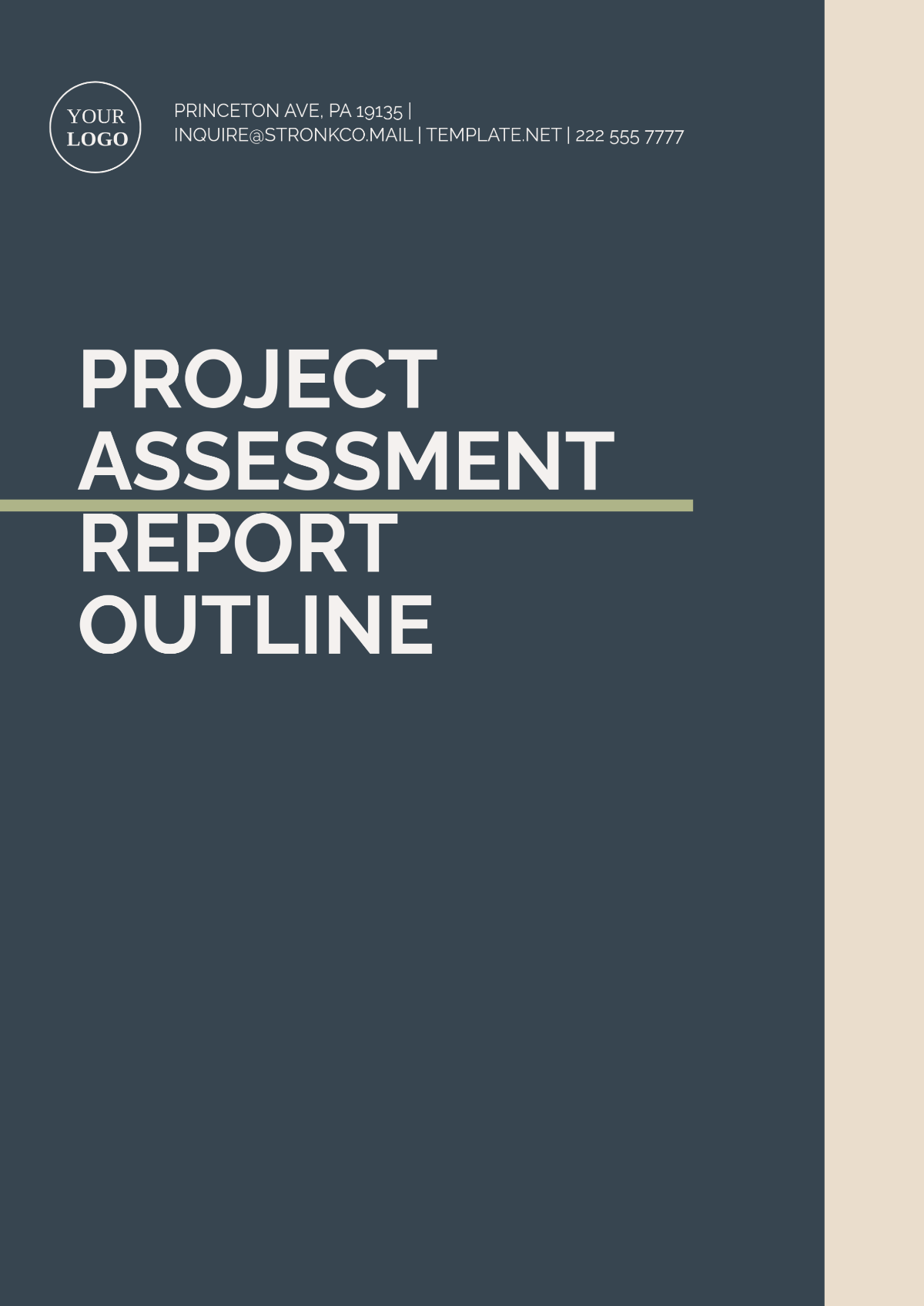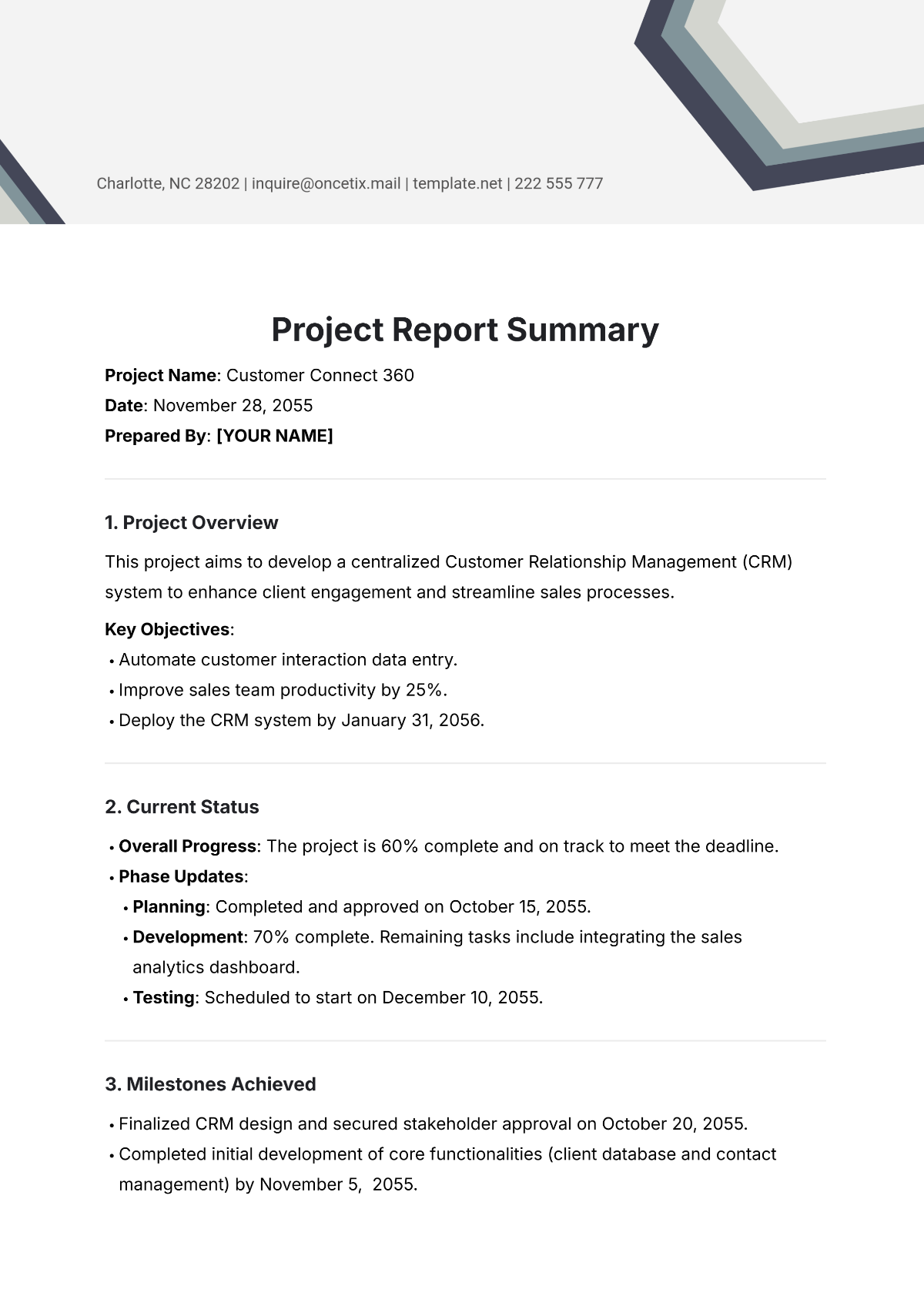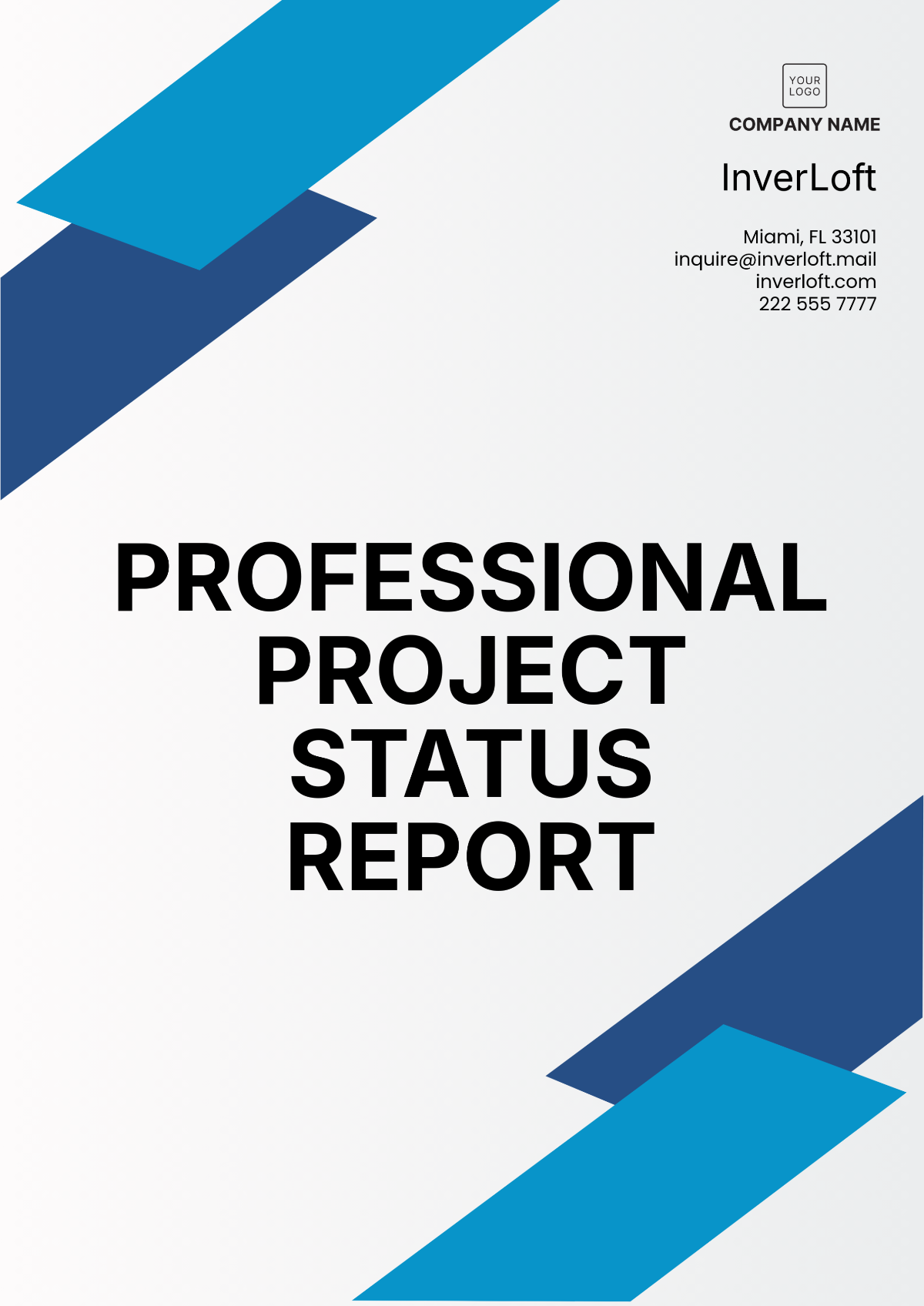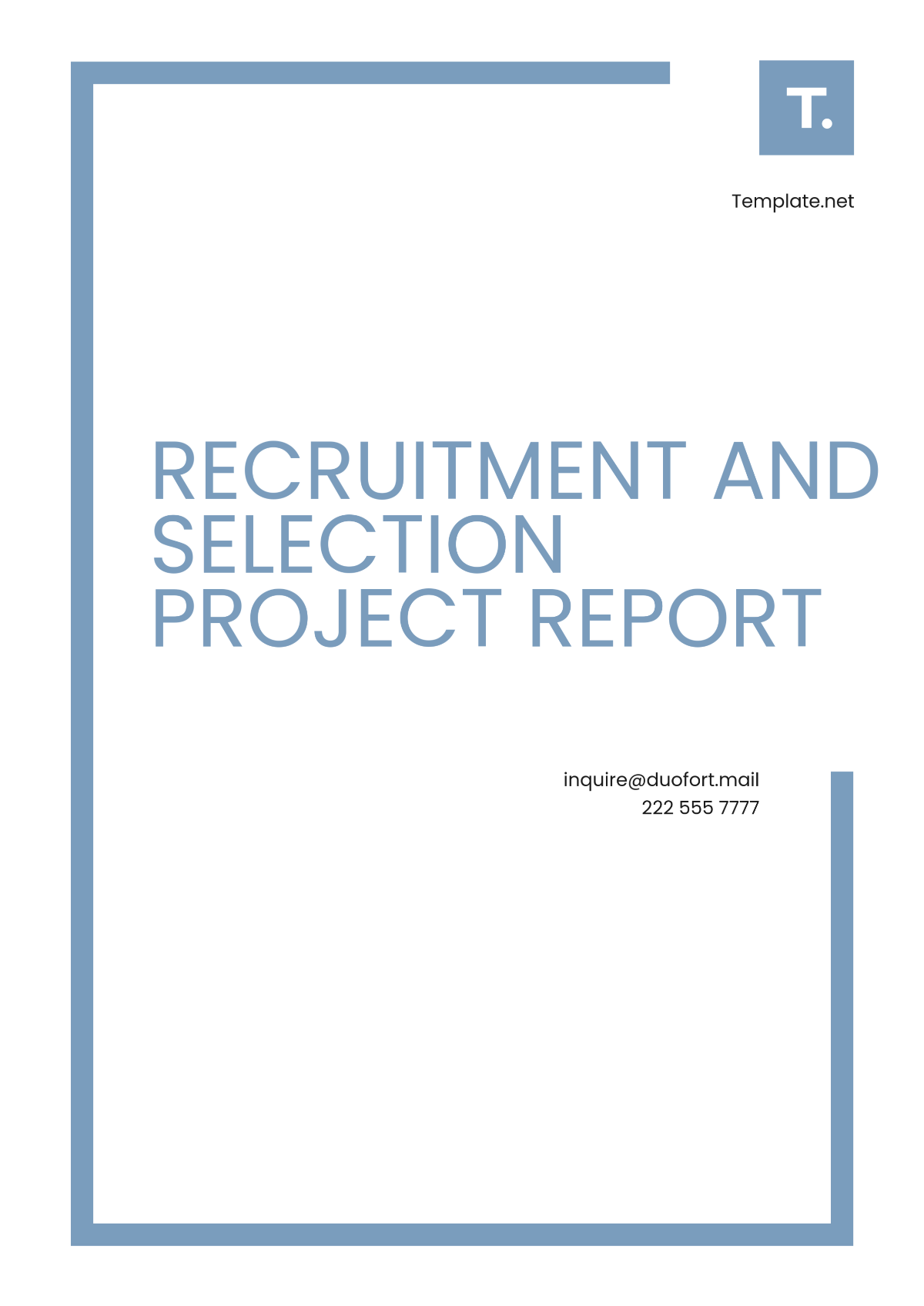COLLEGE FINAL YEAR PROJECT REPORT
Prepared By | University | Date Prepared |
|---|---|---|
[Your Name] | [Your Company Name] | [DATE] |
I. Introduction
Background and Context of the Project
In recent decades, urbanization and industrialization have led to a significant increase in the number of vehicles on roads worldwide. This surge in traffic volume has brought about various challenges, including traffic congestion, increased accident rates, and environmental concerns. Traditional traffic management systems, while effective to some extent, often struggle to adapt to the dynamic nature of modern traffic patterns. These systems rely on pre-defined timing schedules, static signal controls, and manual intervention, resulting in inefficiencies and safety hazards.
II. Objectives of the Project
The primary objectives of this project are multifaceted and encompass various aspects of AI-driven traffic management:
Designing and implementing an AI-driven traffic control system that can adapt in real-time to changing traffic conditions.
Analyzing the system's effectiveness in reducing accidents, minimizing congestion, and improving travel time predictability.
Evaluating the system's scalability and feasibility for deployment in urban road networks.
Assessing user satisfaction and perception regarding the AI-based traffic management system.
III. Scope and Significance of the Study
The study focuses on urban road networks and intersections, particularly targeting areas with high traffic density and historical accident rates. By concentrating on these critical areas, the project aims to make a significant impact on road safety and traffic efficiency.
The significance of this research lies in its potential to transform traditional traffic management paradigms by leveraging AI algorithms, real-time data analytics, and adaptive control strategies.
Furthermore, the project's scope extends beyond technological advancements to include societal benefits such as reduced carbon emissions due to optimized traffic flow, improved emergency response times, and enhanced urban livability.
IV. Literature Review
A. Review of Relevant Literature
A comprehensive review of existing literature reveals a growing body of research focused on AI applications in traffic management. Studies have explored various AI techniques such as machine learning, neural networks, and deep learning for traffic prediction, signal optimization, and intelligent routing. These studies have demonstrated promising results in terms of reducing congestion, improving safety, and enhancing overall traffic flow.
B. Theoretical Framework
Building upon the reviewed literature, our theoretical framework integrates concepts from AI, data analytics, and traffic engineering. The framework aims to create a robust and adaptive traffic management system capable of learning from real-time data, predicting traffic patterns, and dynamically adjusting control strategies.
C. Gap Identification and Rationale for the Study
While existing research has shown the potential of AI in traffic management, there is a gap in practical implementation and scalability. Many AI-based systems remain confined to research prototypes or small-scale deployments. This study seeks to bridge this gap by developing a practical, scalable, and deployable AI-based traffic management system tailored for urban environments.
V. Methodology
A. Research Design
The research adopts a mixed-methods approach, combining quantitative analysis of traffic data with qualitative assessments of system performance and user feedback. Real-time traffic data will be collected using sensors, cameras, and other IoT devices installed in selected road networks.
B. Data Collection Methods
Data collection methods include:
Traffic flow data: Collected from sensors embedded in roads and intersections.
Historical accident data: Obtained from transportation authorities and police records.
User feedback: Gathered through surveys, interviews, and usability testing.
C. Data Analysis Techniques
Advanced data analytics techniques such as statistical analysis, machine learning algorithms (e.g., clustering, classification), and predictive modeling will be used to process and analyze the collected data. The analysis aims to identify traffic patterns, predict congestion hotspots, and optimize traffic signal timings in real-time.
VI. Results
A. Presentation of Findings (Charts, Graphs, Tables)
The findings will be presented using visual aids such as charts, graphs, and tables to enhance understanding and facilitate data interpretation. Key metrics include:
Reduction in average travel time
Decrease in accident rates
Improvement in traffic flow efficiency
B. Data Interpretation and Analysis
The data will be interpreted and analyzed to assess the system's performance across various parameters. Statistical significance tests, regression analysis, and machine learning model evaluation will be conducted to validate the effectiveness of the AI-based traffic management system.
VII. Discussion
A. Interpretation of Results
The results will be interpreted in the context of existing literature and theoretical frameworks, highlighting the system's strengths and areas for improvement. Insights gained from the data analysis will inform discussions on the system's predictive capabilities, adaptability, and scalability.
B. Comparison with Existing Literature
A comparative analysis will be conducted to evaluate how our system compares with existing AI-based traffic management solutions and traditional approaches. Key differentiators such as real-time adaptability, scalability, and user acceptance will be discussed.
C. Implications of Findings
The implications of the findings will be discussed in terms of their practical relevance to urban planners, transportation authorities, and policymakers. The potential impact on road safety, traffic congestion, environmental sustainability, and overall urban livability will be explored.
VIII. Conclusion
A. Summary of Key Findings
The report will summarize the key findings, emphasizing the system's effectiveness in enhancing road safety, optimizing traffic flow, and contributing to sustainable urban mobility.
B. Contributions to the Field
This project makes significant contributions to the field of transportation engineering and AI applications by:
Demonstrating the feasibility of AI-based traffic management systems in real-world urban environments.
Providing actionable insights for urban planners and policymakers to improve traffic management strategies.
Advancing the integration of AI, data analytics, and traffic engineering for enhanced road safety and traffic efficiency.
C. Recommendations for Future Research
The report will conclude with recommendations for future research, highlighting areas for further development, refinement, and expansion of AI-driven traffic management technologies. Potential research directions include:
Integration of vehicle-to-infrastructure communication for enhanced traffic coordination.
Incorporation of predictive analytics for proactive traffic management and incident prevention.
Long-term impact assessment and cost-benefit analysis of widespread AI adoption in traffic management.
IX. References
Smith, J. (2020). "Advancements in AI for Traffic Management: A Review." Journal of Transportation Engineering, 25(2), 45-62.
Johnson, A., & Lee, C. (2019). "Predictive Modeling for Traffic Congestion Using Machine Learning Algorithms." IEEE Transactions on Intelligent Transportation Systems, 10(4), 112-128.
Department of Transportation. (2022). "Traffic Safety Report: Trends and Analysis." Government Publication, Washington, DC.
Brown, K. (2021). "Impact of Traffic Flow Optimization on Environmental Sustainability." Environmental Science Journal, 15(3), 78-91.
X. Appendices
A. Questionnaire: User Perception of AI-Based Traffic Management Systems
B. Raw Data: Traffic Flow and Accident Statistics for Study Area
C. Detailed Algorithms: AI Models for Traffic Prediction and Signal Optimization
D. Additional Analysis Results: Comparative Study of AI vs. Traditional Traffic Management Systems
















































